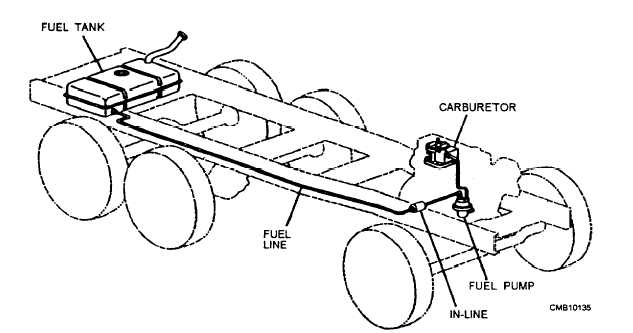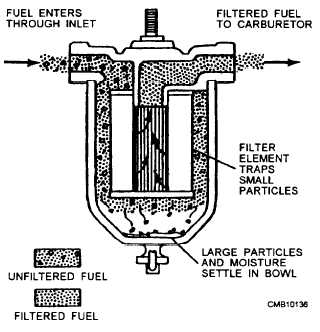
Figure 4-6. - Typical fuel filter locations.
increases, resulting in lower current flow through the heater coil, thus producing less heat to bend the thermostatic blade.
Fuel Filters
Fuel filters stop contaminants (rust, water, corrosion, and dirt) from entering the carburetor, throttle body, injectors, injections pumps, and any other parts that may be damaged by foreign matter. Fuel filters can be located in the following locations (fig. 4-6):
In the fuel line before the carburetor or fuel injectors.
Inside the fuel pump.
In the fuel line right after the electric fuel pump.
Under the fuel line fitting in the carburetor.
A fuel strainer is also located in the fuel tank on the end of the pickup tube.
When in doubt about the location of the fuel filter, refer to the service manual.
Fuel filters operate by passing the fuel through a porous filtering medium (fig. 4-7). The openings in the porous material are very small, and, therefore, any particles in the fuel that are large enough to cause problems are blocked. In addition to the filtering medium, the filter, in some cases, also serves as a sediment bowl. The fuel, as it passes through the filter, spends enough time in the sediment bowl to allow large particles and water to settle out of it.
Several types of fuel filters are used today. They are the replaceable in-line, the replaceable in-line in the

Figure 4-7. - Fuel filter operation.
Continue Reading